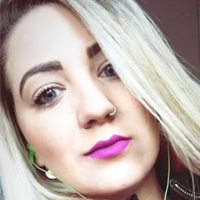Blockade of the distal sciatic nerve with the patient in the supine position using a newly developed position aid with integrated ultrasound probe holder
Published on: 9th July, 2019
OCLC Number/Unique Identifier: 8195621280
Background: We have developed a femoral supporting pad with an integrated ultrasound probe holder and examined its practical usability on patients with lower limb surgery.
Objectives: To evaluate the function of this novel femoral supporting pad with respect to its practicability during the performance of a distal sciatic nerve blockade, the time needed to perform this blockade including the catheter insertion and the quality of postoperative analgesia within the first 24 hours.
Methods: 50 patients which had been scheduled for elective lower leg, ankle or foot surgery had received a continuous blockade of the distal sciatic nerve. Sciatic nerve blockade was performed sonographically controlled with the patients in supine position by using our novel femoral supporting pad with an integrated ultrasound probe holder. Primary endpoint: duration of the intervention. Secondary endpoints: pain intensity (visual analogue scale VAS 0-10) at the first postoperative day; cumulative opioid (piritramide) requirement during their stay on the post Anaesthesia care unit (PACU) with vs. without distal sciatic nerve blockade.
Results: 49/50 patients received a distal sciatic catheter, which had been sonographically placed within a mean time (mean ± sd) of 11:30 ± 3:13 minutes. VAS at the first postoperative day was (mean ± sd) 1 ± 2 at rest and 2 ± 2 as maximum. The piritramide requirement during PACU stay (mean ± sd) was 11 ± 8 mg without vs. 3 ± 6 mg with distal sciatic nerve blockade (p< 0.05).
Conclusion: Continuous distal sciatic nerve blockade using a novel femoral supporting pad with an integrated ultrasound probe holder was feasible in 49 of 50 patients within 11 minutes and 30 seconds.
Emergency care sick palliative and problems oncology in emergency department during the COVID-19 pandemic
Published on: 30th September, 2020
OCLC Number/Unique Identifier: 8873202033
Emergency medical care in palliative patients during the COVID-19 pandemic, it is important to provide a consistent treatment for stable patients that should be consistent with the goals and benefits, the perspective of these patients, but avoiding palliative patients with a poor prognosis that is unlikely to survive. Cancer is the second leading cause of death in the world around 8.8 million deaths a year. Worldwide, about 7-10 million patients are diagnosed with cancer each year, recently there has been a significant increase in the number of cases diagnosed with cancer. About 70% of cancer deaths are in low- and middle-income countries. The goals of emergency medical care based on the criteria of BLS and ACLS, that is should be done “Do not do resuscitation, do not intubate but continue medical treatment excluding endotracheal intubation without prospects for the patient, but offering BLS only treatment concentrated symptomatic. ED is often the only place that can provide the necessary medical interventions (e.g., intravenous fluids or pain management medications. Medications as well as immediate access to advanced diagnostic tests when needed such as CT, RM and other diagnostic and treatment procedures.
A case report of an Erdheim-Chester patient focused on pain management
Published on: 12th September, 2019
OCLC Number/Unique Identifier: 8253091607
Introduction: Erdheim-Chester disease (ECD) is a rare and difficult-to-treat non-Langerhans cell histiocytosis characterized by the excessive production and accumulation of histiocytes. This study reports a case of ECD, emphasizing both its diagnosis, assessment and treatment of the pain associated with the disease.
Case Report: Six years ago, a 39-year-old male patient presented with generalized pain of moderate intensity in the lower limbs that involved periods of greater intensity associated with ambulation. The diagnosis of histiocytosis associated with panhypopituitarism and adrenal insufficiency was proposed. For a specific diagnosis, a bone lesion biopsy was performed, revealing the presence of histiocytic proliferation that was CD1 negative, S100 protein positive, and CD68 negative. Therefore, the diagnosis of non-Langerhans histiocytosis known as ECD was confirmed. During the two years that followed, the patient presented with severe bone pain, particularly in the lower limbs and cranial vault, and the pain subsided to a certain extent with the use of tramadol and paracetamol. Because of the pain, the patient was unable to walk and became bedridden As the patient remained in severe pain, even after the administration of morphine, the opioid was changed from morphine (60mg/day) to oxycodone (30mg/day) for a convenient dosing schedule; furthermore, the oxycodone dosage was scheduled to increase to 40mg/day that same week. The patient experienced significant pain reduction, requiring rescue analgesia only once or twice a week.
Conclusion: To the best of our knowledge, this is the first case report on the characterization and treatment of pain specific to ECD, and we highlight that the patient had a good response to treatment.
Utilizing Pulsed Electromagnetic Field (PEMF) Therapy (Diapulse®) for Drug-Free Pain Management to Eliminate Reliance on Opioids for Non-Malignant Chronic Pain: A literature Review and Proposal for Pilot Study
Published on: 17th June, 2019
OCLC Number/Unique Identifier: 8186246980
The Federal and State governments have declared the presence of an opioid addiction pandemic in the United States claiming the lives of more than 55,000 in 2015 (Rudd RA, Seth P, David F and Scholl L. 2016). The pharmaceutical manufacturers of the numerous FDA-approved opioid drugs are raking in more than $5 billion per year with about 2 million chronic pain sufferers addicted. The irony of this narcotic use and abuse conundrum is the existence of evidence-based technology for drug-free pain management which is not covered for reimbursement among public and private third-party payers. Therefore, this paper is presented to propose a pilot study to demonstrate the efficacy of resolving the chronic inflammation, edema and ischemia that causes non-malignant chronic pain with PEMF therapy, a non-invasive, non-thermal radio transmission of electrical impulses, thereby invalidating the legitimacy of prescribing opioid analgesics in such cases.
Nurses' knowledge and practice in assessment and management of neonatal pain at Governmental Hospitals in Gaza Strip: A cross sectional study
Published on: 6th July, 2021
OCLC Number/Unique Identifier: 9186947792
Objective: The study aimed to investigate neonatal nurses' knowledge and practices related to pain assessment and management that may contribute to improve the quality of pain management by nurses at Neonatal Intensive Care Units (NICUs) of governmental hospitals in Gaza Strip.
Design: The study design was quantitative, descriptive cross sectional, conducted at the NICUs affiliated to the governmental hospitals "Al Shifa Hospital - Al Nasser Pediatric Hospital - European Gaza Hospital".
Materials and Methods: The sample consisted of all nurses working in NICUs. The total number of nurses was 102. The data were collected from study participants by using a self-administered questionnaire. The response rate was 100%. The data collected were analyzed by using descriptive and inferential statistical tests with level of statistical significance at p < 0.5.
Results: The results showed that nurses had very low of knowledge level with mean percentages (59.42%) and very low of practice level with mean percentages (58.33%).
Conclusion: Therefore, the study recommended to developing course or educational program related to assessment and management of neonatal pain to promote their integrated pain management care for neonates.




